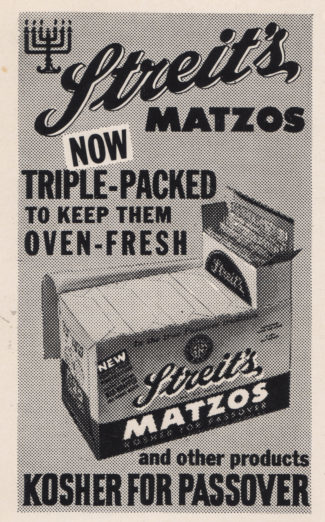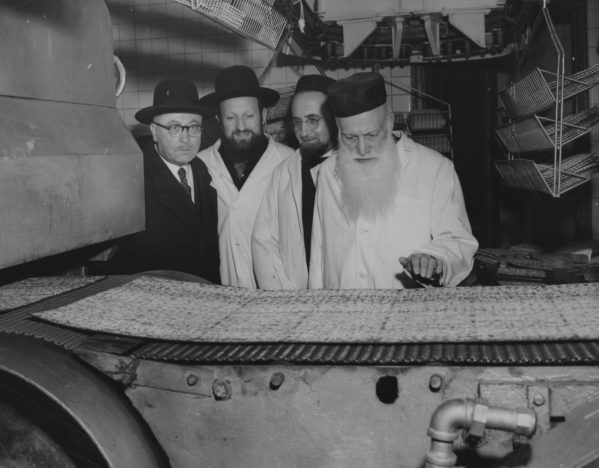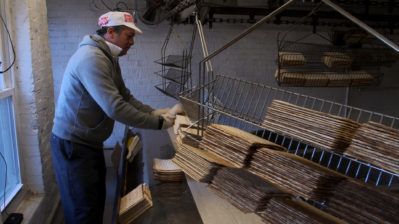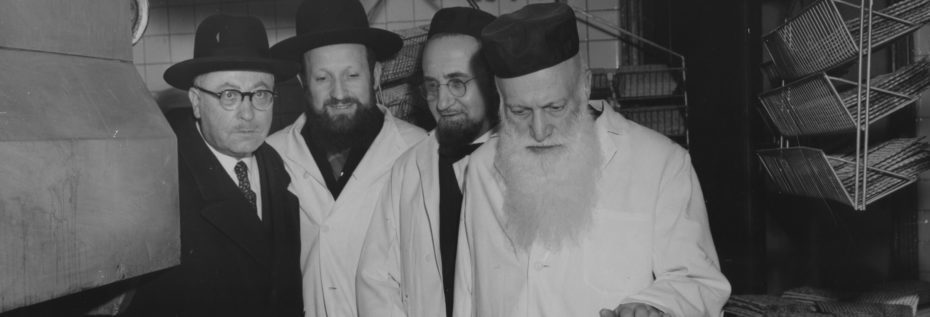INTERVIEW: New doc showcases Streit’s matzo company on Lower East Side

When director Michael Levine began his documentary on the unique history of Streit’s matzo company, the story seemed overflowing in history and tradition. As he continued to explore, and Streit’s continued to face the demands of its changing Lower East Side neighborhood in Manhattan, the documentary had to morph into a story of a community and business needing to evolve to face the pressures of the 21st century.
Streit’s: Matzo and the American Dream premieres today, April 20, at the Film Forum in New York City. Levine, members of the Streit family and urban geographer Elissa Sampson will take part in question-and-answer sessions at select screenings.
“Well, I’ve lived in the Lower East Side for 15 years at this point, and my family has been in the neighborhood for about 100 years,” Levine said recently in a phone interview. “I grew up in New Jersey, but I kind of came back here as soon as I could out of high school. And I’ve lived here since and always had a fascination with the neighborhood and the history of the neighborhood.”
Levine would walk by the red-brick tenement-looking building on Rivington Street not knowing that the world-famous Streit’s matzo was being cooked and packaged on the inside. He assumed, like so many others, that it was another apartment building. After all, the Lower East Side has become a community of apartment buildings with much of its manufacturing history lost to gentrification and rising real estate prices.
“And then one day I happened to stop in front of the window,” he remembered. “The matzo comes out almost at the sidewalk, and [I] was just kind of looking inside to see what was going on. And one of the workers taking the matzo out of the oven, without even looking, just handed a matzo over his shoulder to me out the window.”

Levine stood there in astonishment, probably thankful for the matzo but also temporarily transported to another time, when such hospitality and history were commonplace. He was invited inside to see the operations, which were customized to the unique shape of the building. He knew there was a story there — a story of Jewish identity in the neighborhood, of Jewish practices for ensuring the matzo is Kosher and ready for Passover, of the changing demographics around the factory building, of the modernization of tradition.
“When you walk into that place, it’s like walking into 1920s New York City, unbelievable place with all of the machinery, the people, all the activity, and the smell and the sound of the machinery going,” he said. “I didn’t know really what all the history was at the time, but it was very clear that there was a story there. And the more I kind of explored it, talked to the people who worked there and the family, the Streit family, I became convinced very quickly that it was definitely something that should be documented.”
The Streit family, at first, didn’t see the project as a feature-length documentary, Levine said. After all, the matzo typically takes 18 minutes to make, so what about the other 70 minutes?

“I kind of explained to them, really it’s a whole history of the Lower East Side,” he said. “There’s a lot of elements there that I thought were worthy. … They were very quickly on board with the film. It was so easy. They were so easy to talk to. It didn’t take any effort to try and convince them to talk about things. I mean, they just immediately opened up about the successes and challenges they were going through.”
To tell the story of Streit’s, Levine relied on in-person interviews with several family members, men whose lives are personally connected to the company’s founders. He also talked to the workers, several of whom have been loyal to making matzo for decades. Rounding out the narrative are archival shots of the neighborhood and the Streit’s building, back when crowds would line the blocks and wait for their freshly made matzo.
“The old back-and-white footage, that came from a film that we just found in kind of a back closet at the factory,” Levine said. “We just kind of stumbled upon that, so that was a great find. Things came from a lot of different sources. New York Public Library and the Seward Park Library here in the city were very helpful, too.”
Those who know the story of Streit’s also know of the history-making changes that have occurred in recent months. Spoiler alert: The company has decided to relocate from the Lower East Side to just outside New York City. This development presented some unique narrative challenges to Levine.
“Their big challenges there were the aging equipment,” the filmmaker said of the decision. “So they’ll have new equipment at the new factory, and they’re still up against competition. But they’ll be able to be more competitive themselves. I think it was a move that I know they were very reluctant to make. They didn’t want to until they had to, and that’s why they stuck it out there so long.”
As he put it: “The Lower East Side lost another in a chain of losses.”
Audience members who take in a screening of Streit’s will see the ins and outs of production and begin to understand the difficulties of maintaining a presence on the Lower East Side. They will also see the remaining family members struggling with the battle between tradition and modernity. Their goal is to keep making matzo and have it taste like it always has. That’s not an easy task.
“The equipment really was getting to the point where they just weren’t able to produce enough,” Levine said. “It was becoming more and more challenging to manufacture in the city, especially in that neighborhood where the city really just doesn’t support manufacturing. It’s becoming a luxury neighborhood. The city, if they wanted to keep them there, could have been more supportive.”
The story of Streit’s is a story of a neighborhood with a strong Jewish identity and how that identity has evolved over the years. It’s all about the matzo, and yet it’s not about the matzo. These issues run so deep and continue to change the identities and perceptions in New York City.
“You start to pick up pretty quickly the entire diversity of the Lower East Side and all of its layers of history and immigration,” Levine said. “It’s all kind of represented in Streit’s, and I think that’s pretty rare to find. … That was definitely part of what piqued my interest in the project as well.”
By John Soltes / Publisher / John@HollywoodSoapbox.com
Streit’s: Matzo and the American Dream is currently playing the Film Forum in New York City. Click here for more information.

